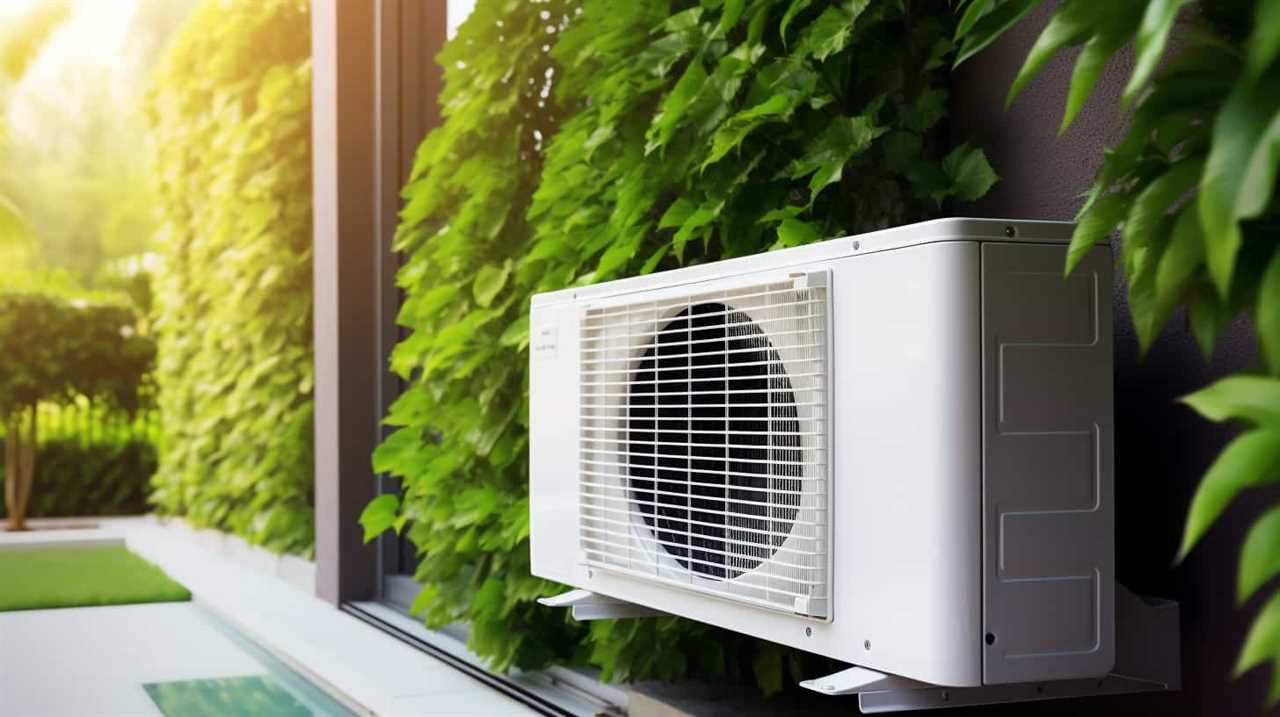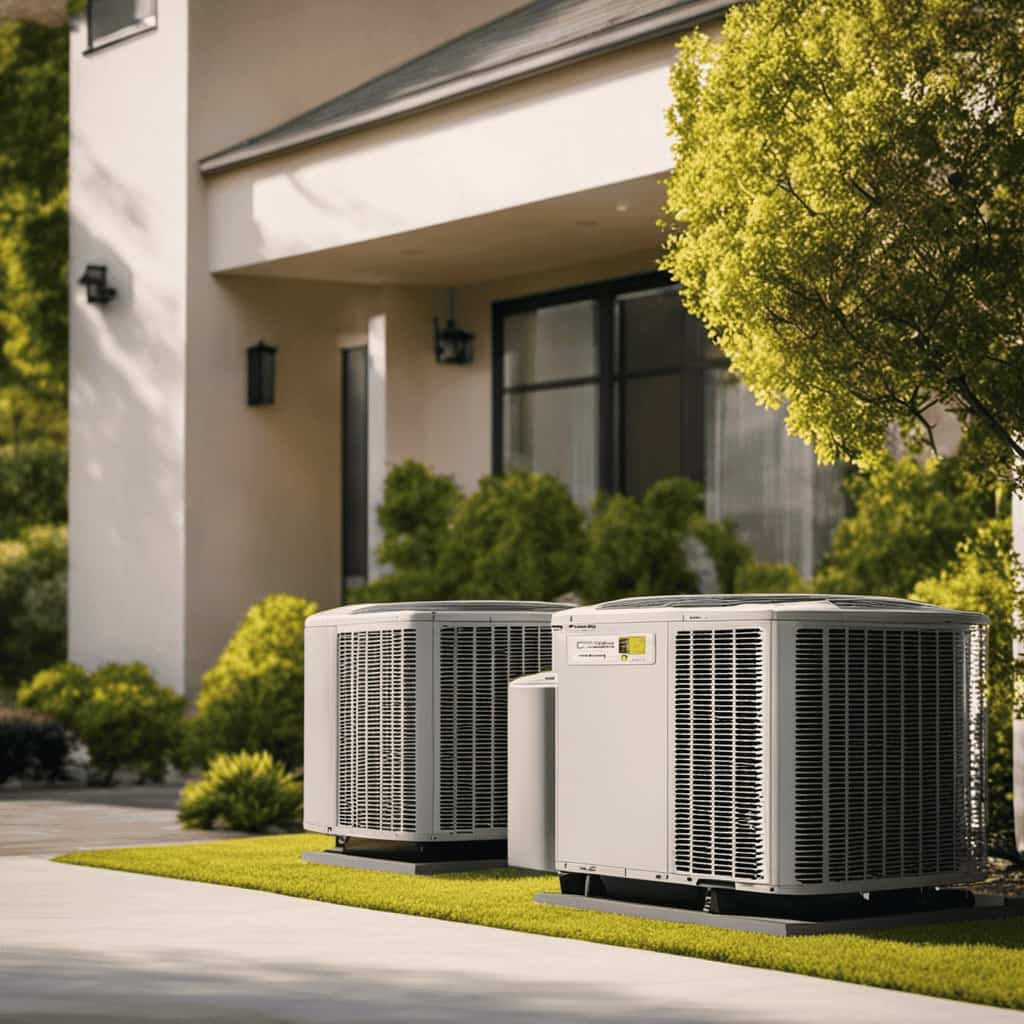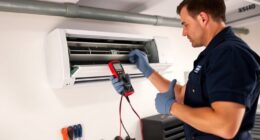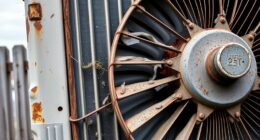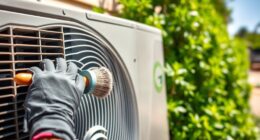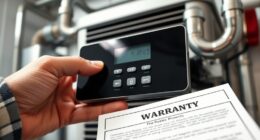Are you aware that heat pumps have the potential to reduce homeowners’ heating and cooling expenses by up to 50%?
In this article, we will explore energy-saving techniques for heat pumps. We’ll delve into topics such as understanding efficiency ratings, optimizing thermostat settings, enhancing insulation and sealing, implementing proper maintenance, and exploring additional energy-saving features.
By implementing these techniques, we can maximize the efficiency of heat pumps and reduce our energy consumption.
Let’s get started on our journey towards a more energy-efficient home.
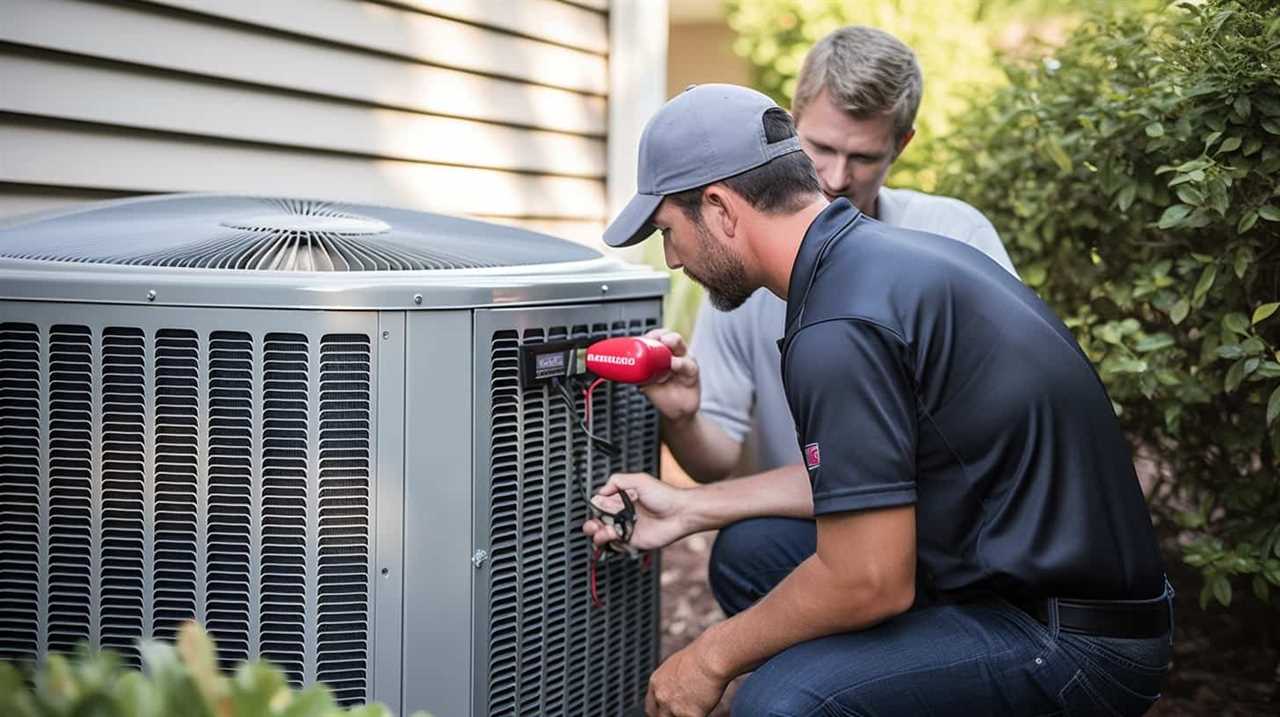
Key Takeaways
- Heat pump efficiency is measured by its coefficient of performance (COP) and higher COP values indicate greater efficiency.
- Adjusting thermostat settings can maximize energy savings, and smart thermostats offer advanced features like programmable schedules.
- Proper insulation improves heat pump energy efficiency by minimizing heat loss and reducing compressor workload.
- Regular maintenance and cleaning are essential for heat pump efficiency, as clogged filters and lack of maintenance can reduce efficiency.
Understanding Heat Pump Efficiency Ratings
We need to understand heat pump efficiency ratings in order to make informed decisions about energy-saving techniques.
Heat pump performance can vary based on its efficiency, which is measured by its coefficient of performance (COP). The COP indicates the ratio of heat output to electrical energy input. Higher COP values signify greater efficiency.
To ensure consistency and reliability, heat pump efficiency standards have been established by organizations such as the Air Conditioning, Heating, and Refrigeration Institute (AHRI) and the U.S. Department of Energy (DOE). These standards provide benchmarks that help consumers compare different heat pump models and choose the most energy-efficient option.
By considering heat pump efficiency ratings, we can optimize energy savings and reduce our environmental impact.

Transitioning to the next section, let’s now explore the importance of optimizing heat pump thermostat settings.
Optimizing Heat Pump Thermostat Settings
To optimize energy savings and maximize efficiency, it’s important to adjust and fine-tune the heat pump thermostat settings. By utilizing smart thermostats for heat pumps, homeowners can take advantage of advanced features such as programmable schedules, remote control access, and intelligent learning algorithms. These smart thermostats allow for precise temperature control, ensuring that the heat pump operates only when necessary and at the most energy-efficient settings.
Another way to optimize thermostat settings is by considering geothermal heat pump efficiency. Geothermal heat pumps utilize the stable temperature of the earth to provide heating and cooling, resulting in higher energy efficiency compared to traditional heat pumps. Adjusting the thermostat settings to take full advantage of this efficiency can further enhance energy savings.
Now, let’s explore the next topic of enhancing heat pump insulation and sealing to maximize energy efficiency.
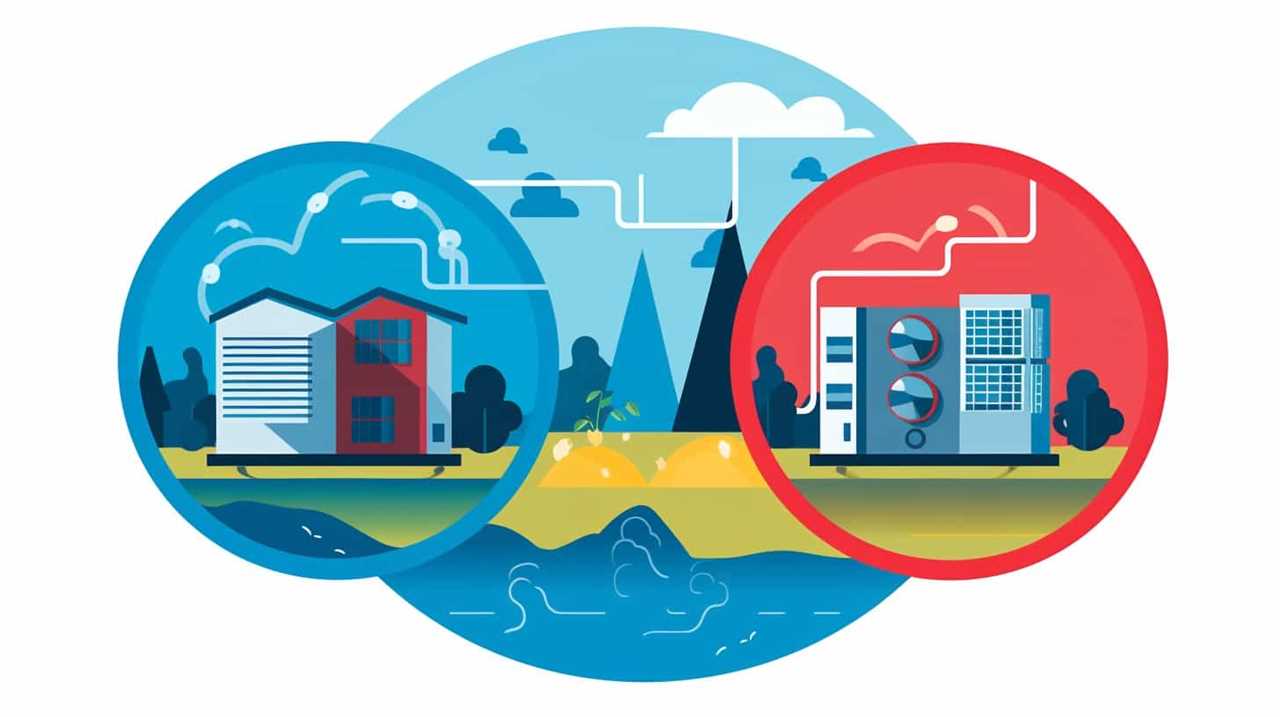
Enhancing Heat Pump Insulation and Sealing
By properly insulating and sealing the heat pump, we can significantly improve its energy efficiency. Heat pump installation plays a crucial role in ensuring optimal performance and reducing energy consumption.
One key aspect is the insulation of the heat pump unit itself. Insulation helps to minimize heat loss during operation, allowing the heat pump to maintain the desired indoor temperature more effectively. Additionally, proper insulation reduces the workload on the compressor, resulting in improved energy efficiency.
Another important consideration is air duct leakage. Leaky air ducts can lead to significant energy losses as conditioned air escapes before reaching its intended destination. Regular inspection and sealing of air ducts can prevent this problem and maximize the efficiency of the heat pump system.
Implementing Proper Heat Pump Maintenance
Regular maintenance and cleaning are essential to ensure optimal performance and extend the lifespan of your heat pump. Neglecting proper maintenance can lead to decreased efficiency, increased energy consumption, and the need for costly repairs.
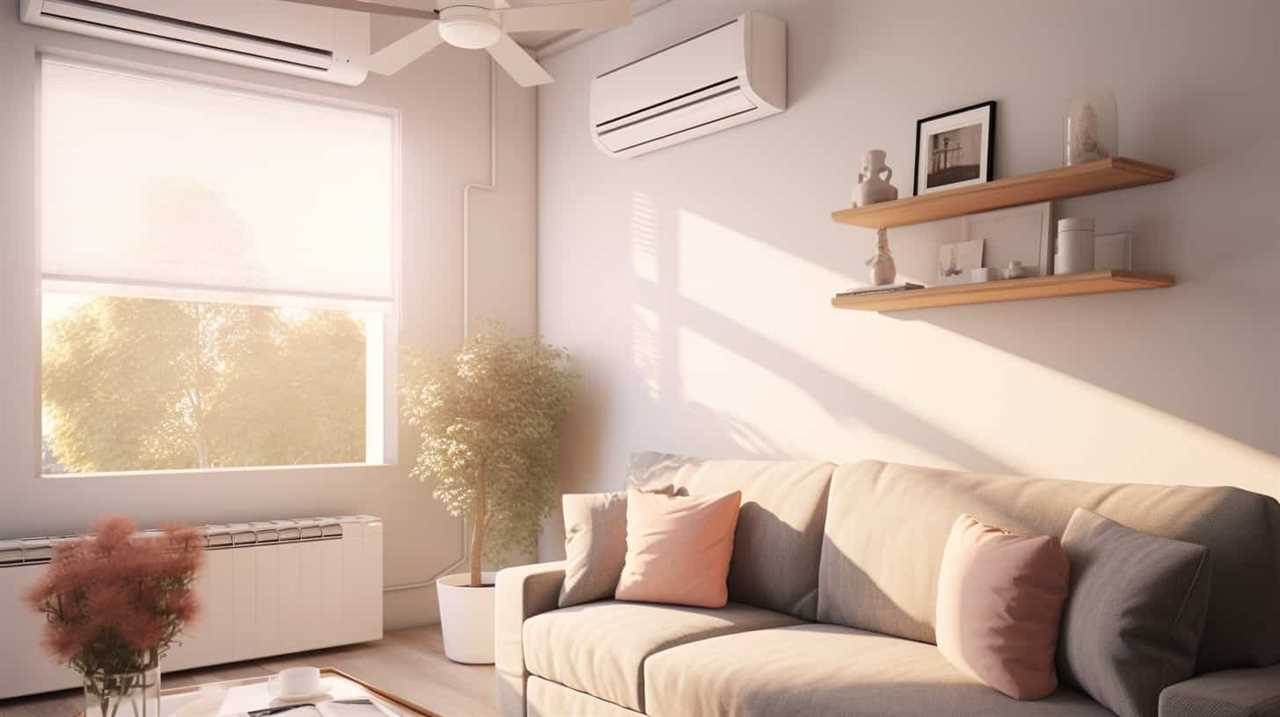
Here are three important maintenance tasks to keep your heat pump running smoothly:
-
Clean or replace air filters: Clogged filters restrict airflow and reduce the heat pump’s efficiency. Regularly cleaning or replacing the filters can improve performance and prevent unnecessary strain on the system.
-
Check and clean the outdoor unit: Ensure the outdoor unit is free from debris, such as leaves or dirt, that can obstruct airflow. Cleaning the coils and fins can also prevent overheating and maintain efficient operation.
-
Schedule professional maintenance: Regular inspections and tune-ups by a qualified technician are crucial for identifying any potential issues and addressing them promptly. Professional maintenance can prevent major problems and extend the lifespan of your heat pump.
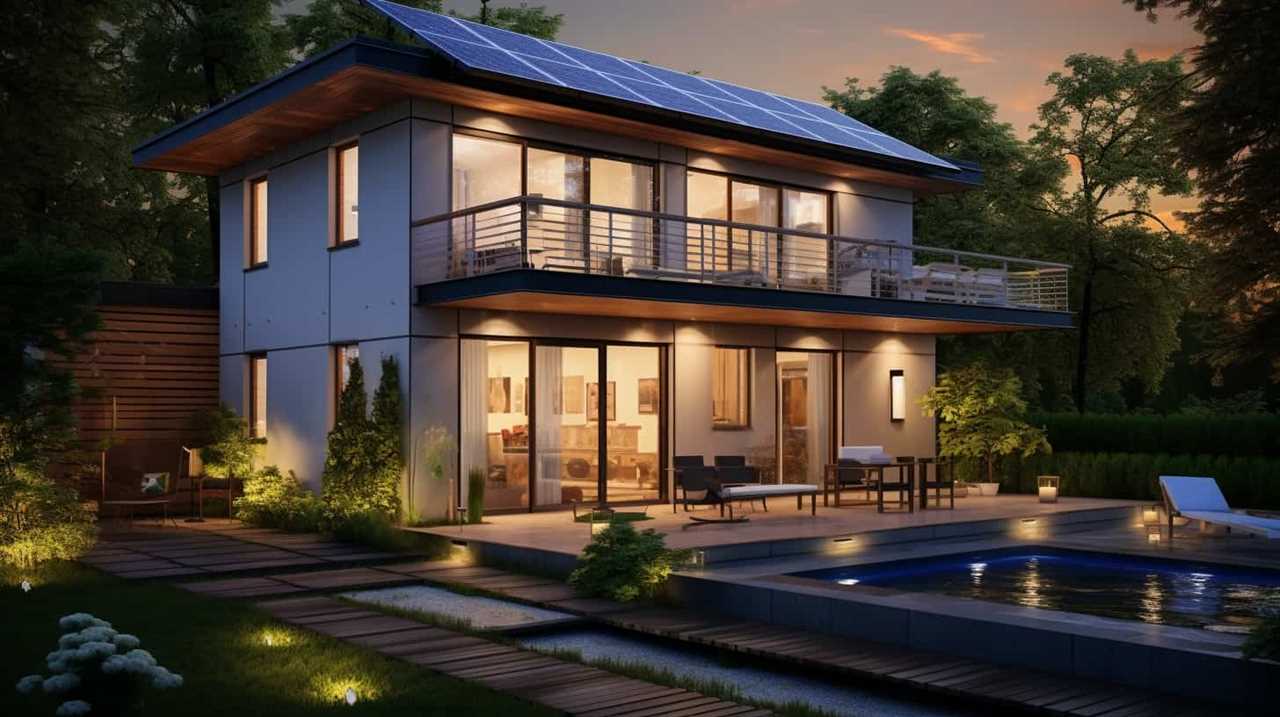
Exploring Additional Energy-Saving Features for Heat Pumps
Let’s explore the various energy-saving features that can be implemented in heat pumps.
One effective feature is the use of smart controls, which allow homeowners to optimize their energy usage and reduce their carbon footprint. Smart controls enable heat pumps to adjust their settings based on factors such as weather conditions and occupancy patterns, ensuring that energy isn’t wasted when it isn’t needed.
Another energy-saving feature is geothermal technology, which utilizes the constant temperature of the earth to heat and cool homes. By tapping into this renewable energy source, heat pumps can significantly reduce their reliance on electricity, resulting in lower energy consumption and cost savings for homeowners.
Implementing both smart controls and geothermal technology can greatly enhance the energy efficiency of heat pumps and contribute to a greener future.
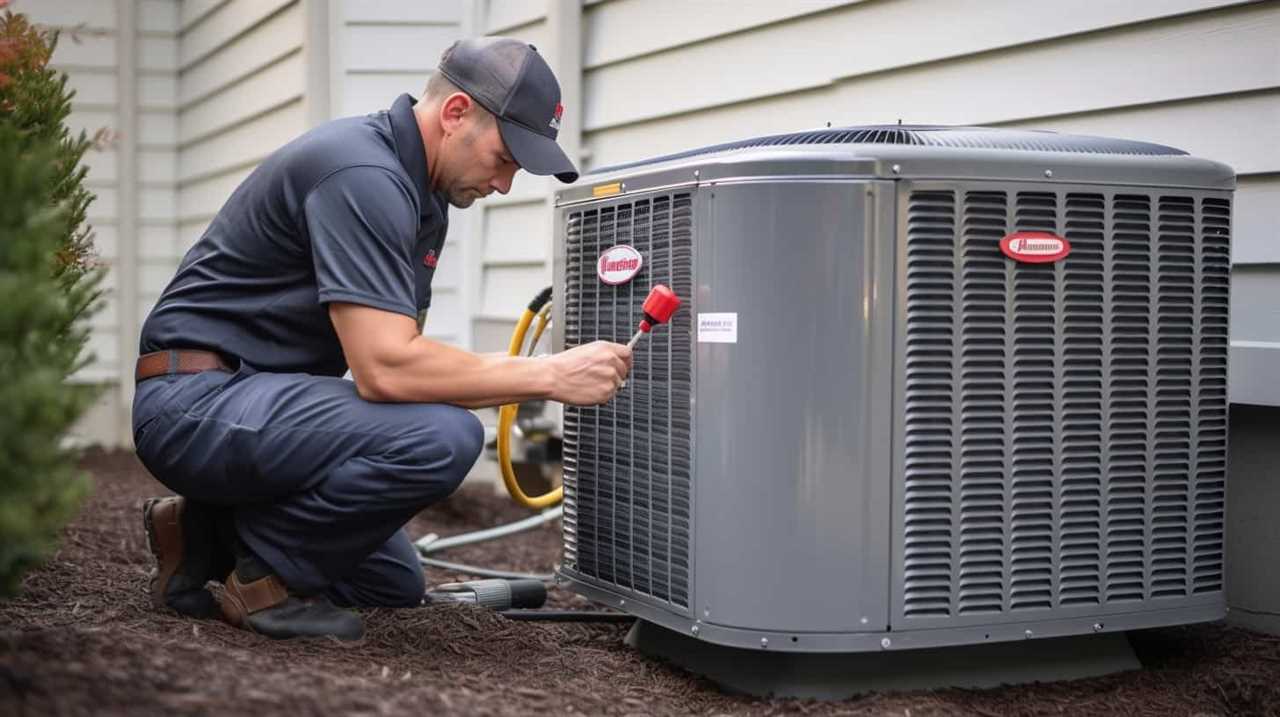
Frequently Asked Questions
Are Heat Pumps Suitable for All Climates?
Heat pumps are generally suitable for all climates, but their efficiency may vary. In extreme climates, heat pumps may have limitations due to reduced performance. It is important to consider the specific climate conditions when evaluating heat pump suitability.
Can I Use My Existing Thermostat With a Heat Pump?
Yes, we can use our existing thermostat with a heat pump. However, there may be compatibility issues. It is important to check the thermostat settings and configurations to ensure optimal performance. Using smart thermostats offers the benefits of energy-saving and programmable controls.
How Can I Improve the Insulation and Sealing Around My Heat Pump?
To improve insulation and sealing around our heat pump, we can use techniques such as adding weatherstripping, caulking gaps, and insulating ductwork. These methods help prevent air leakage and increase energy efficiency.
What Are Some Common Maintenance Tasks I Should Perform on My Heat Pump?
Regular cleaning, lubrication, and filter replacement are necessary maintenance tasks for heat pumps. Additionally, an annual professional inspection and maintenance is crucial to ensure optimal performance and energy efficiency.

Are There Any Advanced Features or Technologies Available to Further Enhance the Energy-Saving Capabilities of Heat Pumps?
Smart control and variable speed technology are advanced features that can greatly enhance the energy-saving capabilities of heat pumps. By optimizing temperature settings and adjusting fan speeds, these technologies ensure efficient operation and maximum energy conservation.
Conclusion
In conclusion, implementing energy-saving techniques for heat pumps can significantly reduce energy consumption and lower utility bills.
One interesting statistic to note is that optimizing heat pump thermostat settings can save up to 10% on heating and cooling costs annually.
By understanding efficiency ratings, enhancing insulation and sealing, and performing proper maintenance, homeowners can maximize the performance of their heat pumps and contribute to a more sustainable future.
